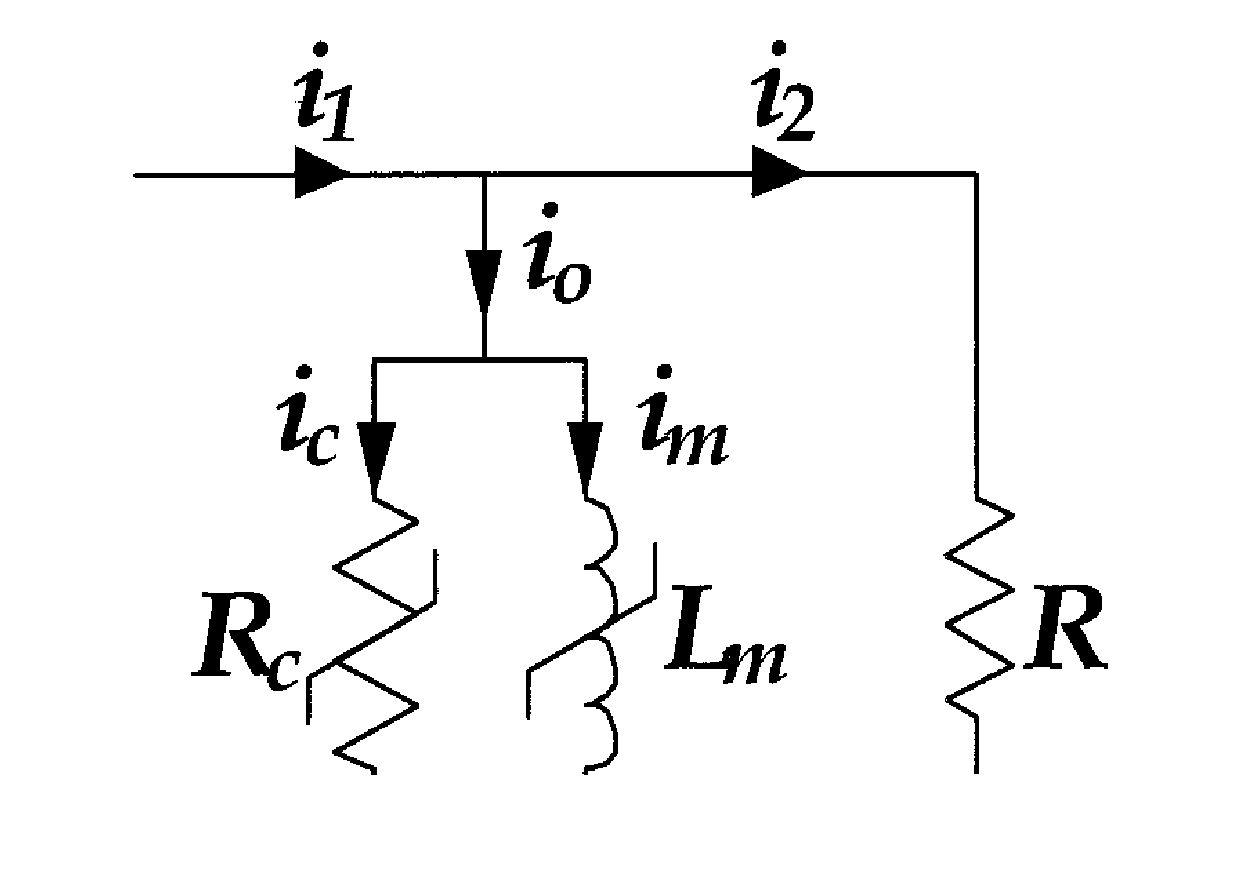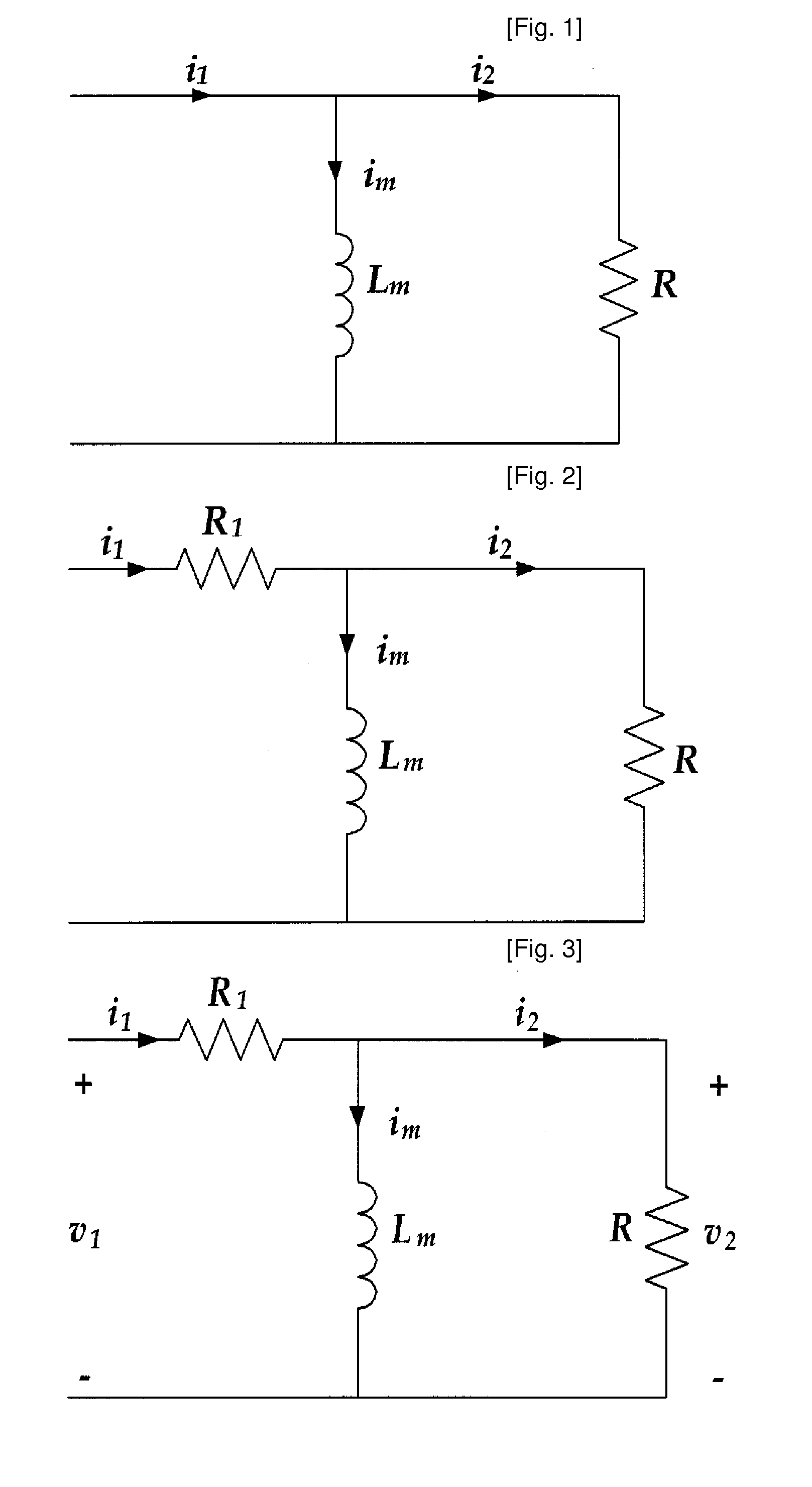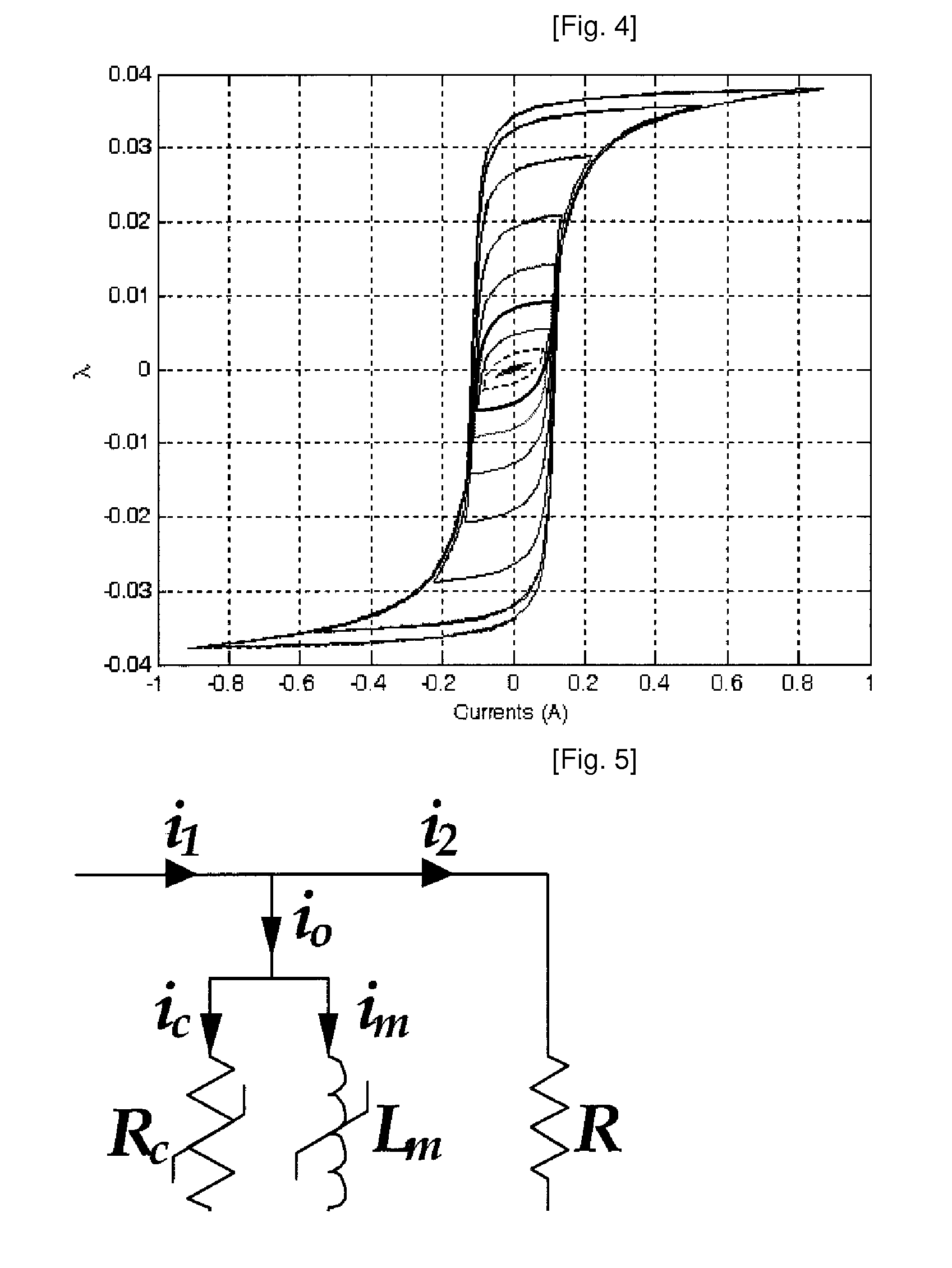Error Compensating Method for Instrument Transformer
- Summary
- Abstract
- Description
- Claims
- Application Information
AI Technical Summary
Benefits of technology
Problems solved by technology
Method used
Image
Examples
Embodiment Construction
[0046]Hereinafter, an error compensation method of an instrument transformer according to the present invention will be described in detail with reference to the accompanying drawings. In this case, an iron-core current transformer will be exemplified.
[0047]FIG. 5 is a diagram showing an equivalent circuit of a current transformer in which hysteresis characteristics of iron core are considered. Here, Rc and Lm represent core-loss resistance and magnetizing inductance, respectively, both of which have non-linear characteristics. Further, i0, ic, and im represent an excitation current, a core-loss current, and a magnetizing current, respectively, among which the relationship of i0=ic+im is established.[0048]The hysteresis characteristics of iron core are represented by a curve showing the relationship between magnetic flux and excitation current (λ-i0). FIG. 6 shows a hysteresis curve selected from the plurality of hysteresis curves of FIG. 4 (refer to the outer curve of two curves of...
PUM
 Login to View More
Login to View More Abstract
Description
Claims
Application Information
 Login to View More
Login to View More - R&D
- Intellectual Property
- Life Sciences
- Materials
- Tech Scout
- Unparalleled Data Quality
- Higher Quality Content
- 60% Fewer Hallucinations
Browse by: Latest US Patents, China's latest patents, Technical Efficacy Thesaurus, Application Domain, Technology Topic, Popular Technical Reports.
© 2025 PatSnap. All rights reserved.Legal|Privacy policy|Modern Slavery Act Transparency Statement|Sitemap|About US| Contact US: help@patsnap.com



